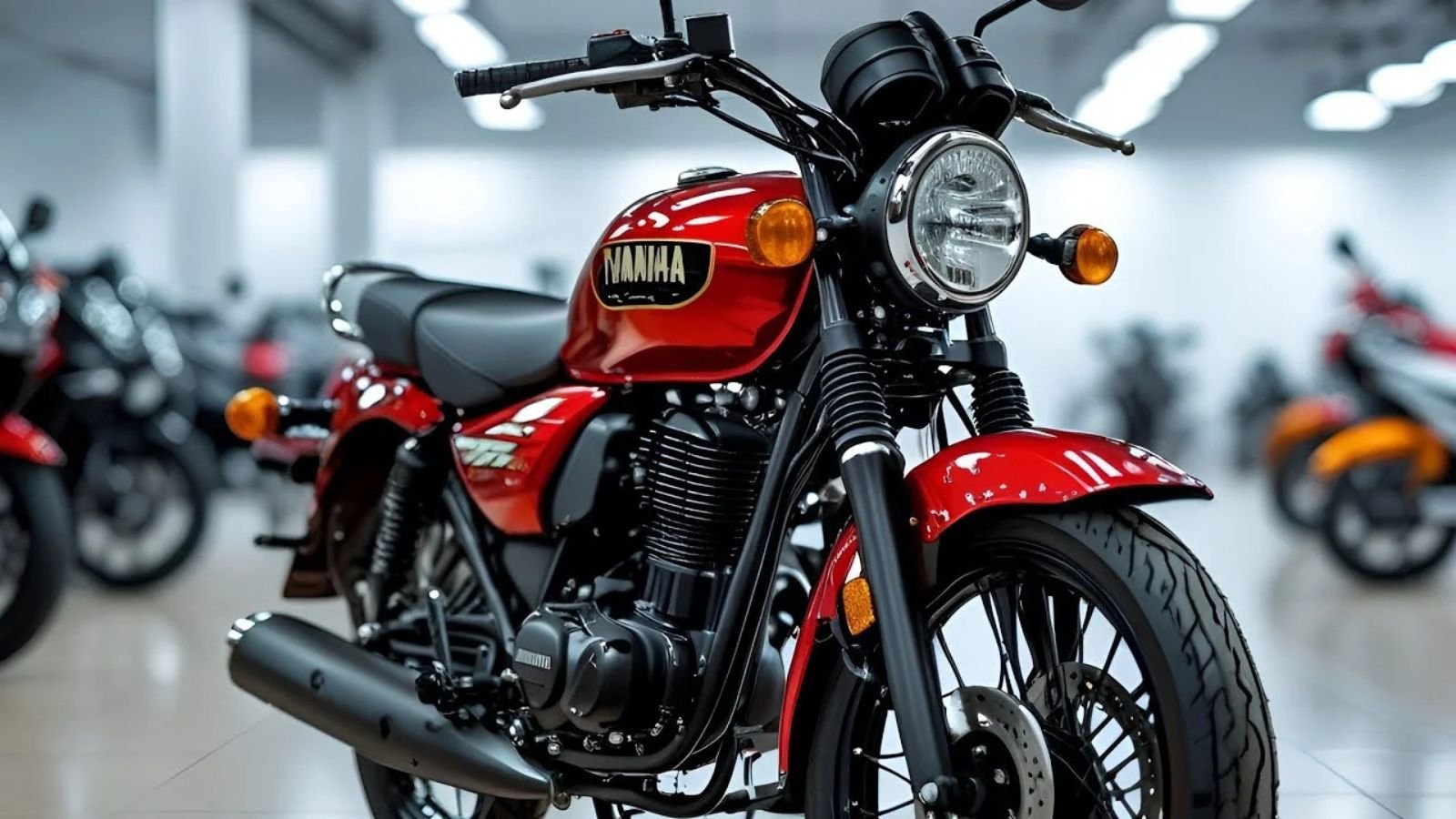In the world of motorcycles, very few names evoke nostalgia, thrill, and pure love the way the Yamaha RX100 does. Launched in India in the mid-1980s, this compact motorcycle didn’t take long to make its mark. It wasn’t just a means of transportation—it became a symbol of speed, style, and personality. For a whole generation of Indian youth, the Yamaha RX100 was the ultimate dream machine, one that delivered unmatched adrenaline without burning a hole in your pocket.
Even today, nearly three decades after it was discontinued, the Yamaha RX100 continues to enjoy an almost mythical status. Vintage collectors, passionate restorers, and two-stroke lovers still hunt for this beauty on classifieds and enthusiast forums. But what exactly made this little rocket such a timeless icon? Let’s take a deep dive into the machine that redefined biking in India.
Styling and Design: Simple Yet Unmistakable
At first glance, the Yamaha RX100 may appear modest by today’s standards. It doesn’t have aggressive bodywork, LED lights, or sculpted fairings. But look closely, and you’ll appreciate its clean lines and compact proportions. The round headlamp, chrome mudguards, flat seat, and classic tank graphics gave the bike a distinctive identity that oozed old-school charm.
Unlike many modern bikes that tend to follow global styling trends, the Yamaha RX100 had its own unmistakable look. The slim profile made it extremely agile, and its upright stance offered excellent visibility and comfort. It was a bike that didn’t try too hard, yet it had more street presence than many motorcycles twice its size. Whether parked at a college gate or zipping through city lanes, it always turned heads.
Engine and Performance: The Real Game-Changer
What truly set the Yamaha RX100 apart from every other motorcycle in its segment was its fiery heart—a 98cc, single-cylinder, air-cooled, two-stroke engine. At a time when most bikes focused on fuel efficiency and utility, the RX100 roared onto the scene with power and performance that was unheard of in the 100cc category.
Churning out approximately 11 horsepower, the bike was incredibly light, weighing just around 100 kg. This perfect power-to-weight ratio allowed the Yamaha RX100 to accelerate like nothing else on the road. Riders often talk about how quickly it could hit 60 km/h, or how easily it could outrun larger four-stroke motorcycles of the time. The engine had a rev-happy nature and delivered that characteristic two-stroke punch that was both raw and addictive.
And let’s not forget the sound. The sharp, crackling exhaust note of the Yamaha RX100 was music to the ears of any petrolhead. That high-pitched roar became a signature sound on Indian streets. For many, hearing that exhaust tone was enough to send chills down the spine.
Transmission and Ride Experience: Raw Yet Refined
The bike came with a 4-speed manual gearbox that worked in perfect harmony with the peaky engine. Gear shifts were smooth, and the clutch feel was light and predictable. The gear ratios were short enough to make acceleration brisk, and highway cruising was comfortable for its time.
But the Yamaha RX100 wasn’t just about outright speed. It offered an incredibly balanced ride. The telescopic front forks and swingarm suspension at the rear provided decent comfort on Indian roads. It may not have floated over potholes like modern mono-shock setups, but it managed to offer a fairly composed ride for both city use and weekend getaways.
Handling was another area where the Yamaha RX100 excelled. Thanks to its low weight, responsive steering, and compact frame, it could weave through traffic effortlessly. Young riders especially loved how easy it was to lean into corners or perform tight U-turns. It was playful, agile, and fast—a rare combination that’s hard to find even in today’s motorcycles.
Features and Ergonomics: Back to Basics
Let’s be honest—the Yamaha RX100 didn’t offer many modern-day features. There were no digital consoles, no electric start, and certainly no ABS. But that’s what made it so pure. The analog speedometer, fuel gauge, and minimalist switchgear provided just what was necessary and nothing more.
The seating position was upright and neutral, which made it comfortable for both daily commuting and spirited riding. The flat, well-padded seat could easily accommodate two passengers, and the grab rail at the rear was both functional and stylish.
Braking duties were handled by drum brakes on both ends. By today’s standards, this might seem outdated, but for its time, the braking performance was adequate. What it lacked in braking tech, it more than made up for in ride feel and engagement.
Fuel Efficiency and Maintenance
Given that the Yamaha RX100 was a two-stroke motorcycle, it wasn’t the most fuel-efficient option available. Depending on the rider’s style and tuning of the engine, fuel economy ranged between 25 to 30 km/l. However, most owners were more than willing to sacrifice a bit of mileage in exchange for the thrilling performance.
Maintenance was straightforward and affordable. The bike was simple in design, and most local mechanics could service it with ease. Spare parts were once readily available, and thanks to its mechanical simplicity, many riders learned to fix minor issues themselves.
Today, though, finding genuine parts can be a challenge. But for those passionate about the bike, that’s just a small price to pay for reliving the magic of the Yamaha RX100.
Racing Roots and Street Cred
One of the lesser-known aspects of the Yamaha RX100 is its strong connection to racing culture in India. It was a common sight at drag strips and hill climbs during the 80s and 90s. The bike’s ability to deliver quick bursts of speed made it a favorite among racers and tinkerers. Modified RX100s with expansion chambers, bigger carburetors, and high-compression heads were often spotted dominating street races.
Even in stock form, the Yamaha RX100 had an incredible top-end for a 100cc motorcycle. Hitting a top speed of around 100 km/h was no big deal. And thanks to its bulletproof engine and strong bottom-end torque, it could handle abuse like a champ.
All these factors contributed to its massive street cred. Owning an RX100 wasn’t just about transportation—it was about attitude, speed, and individuality.
Why the Yamaha RX100 Was Discontinued
Despite its immense popularity, Yamaha had to pull the plug on the RX100 in 1996. The main reason? Emission norms. Two-stroke engines, though fun and powerful, were far from eco-friendly. As environmental regulations in India tightened, manufacturers had to shift to cleaner four-stroke technology. The Yamaha RX100 simply couldn’t meet the new standards without compromising its raw character.
But that didn’t stop people from cherishing it. Even today, many riders are restoring old RX100s to showroom condition, preserving its legacy for future generations.
FAQs About the Yamaha RX100
Q1. Why is the Yamaha RX100 so loved even today?
Because it offered a unique blend of lightweight performance, stunning acceleration, iconic design, and emotional connect. There’s never been another bike quite like it.
Q2. Can I still buy a Yamaha RX100 today?
New production is not available, but many enthusiasts buy and restore used models. The demand is so high that well-maintained examples can cost over ₹1.5 lakh today.
Q3. Is the Yamaha RX100 good for beginners?
Yes, with its manageable power and light body, it’s ideal for new riders. However, given its vintage status, beginners should be cautious and well-versed in maintenance.
Q4. Are parts available for the Yamaha RX100?
Original parts are becoming rare, but the aftermarket scene is active. Many third-party manufacturers produce replicas, and some workshops even fabricate custom components.
Q5. Will Yamaha ever bring back the RX100?
Rumors pop up from time to time about a four-stroke version making a comeback, but nothing concrete has surfaced. Until then, the original two-stroke Yamaha RX100 remains irreplaceable.
Final Thoughts: A Timeless Icon on Two Wheels
The Yamaha RX100 isn’t just a motorcycle—it’s a piece of motorcycling history that continues to ignite passion in riders, young and old. It captured the essence of riding in its purest form—unfiltered, mechanical, and emotional. It was the kind of bike that made you look forward to every ride, no matter how short the distance.
In today’s age of feature-laden motorcycles and electronic aids, the simplicity of the Yamaha RX100 serves as a reminder of what motorcycling once was. And for those lucky enough to have owned or ridden one, the memories never fade.
Whether you’re a collector, a vintage bike enthusiast, or just someone who appreciates the golden era of two-strokes, the Yamaha RX100 will always hold a special place. Because legends never really die—they just become rarer, louder, and more cherished with time.
Some Important Link
| Telegram Group | Click Here |
| WhatsApp Group | Click Here |
| Home Page | Click Here |









